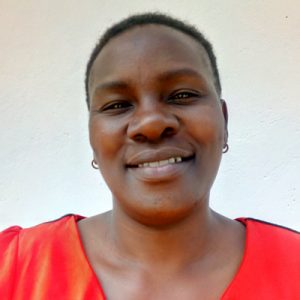St. Benedict Emutetemo Primary School is located in the Emutetemo community, which is highly populous. Buildings surround the school, as do community members' farms, where they grow maize, sugarcane, and subsistence food crops.
Founded in 1976 and sponsored by the St. Benedict Catholic Church, the school is known for being an "academic giant" in its students' consistent top performance, leading the best pupils to continue to study at university eventually. They also have a powerful choir that competes - and wins - at the national level.
The primary schools' students and teachers' accomplishments shine brighter when they are brought into the context of the daily crises they face at school: there is no water on campus and a lack of safe latrines for the 477 students and 16 teachers and staff.
The lack of water requires students to start their school day by arriving very early to go to a protected spring in the community to fetch water. The school maintains a rotating roster that assigns classes to the spring each day, starting at 6:30 am. The spring is around .3 miles away from the school, requiring teachers to accompany the students to keep them safe and also keep them from running off for the day. The same class is expected to return to the spring to fetch water as often as necessary to meet the school's water needs. This typically amounts to six trips per day, robbing both pupils and teachers of their class time.
"I waste a lot of time fetching water when it's our turn," said Clinton, a teenaged student at the school. Clinton said that when the students who don't bring jerrycans get told to stay in class instead of going to the spring, he still feels bad. The students remain there without their teacher, and the division drives bad feelings between students who feel like some are not doing their duty to help their classmates.
"I come from Kakamega, and when I am on duty, I have to be in school by 6:50 am and ensure that I have organized the responsible class to fetch water," explained teacher Julie Okello.
"I get disappointed, especially when the students do not come with jerricans, causing the fetching of water to be slow. Some run back home while some parents refuse to give jerricans, claiming they will get lost."
At the spring, which is meant to serve families in the area, not the school, students experience hostile treatment from the adults there. Students' large numbers cause crowding and delays at the spring for community members, and the reverse causes delays in students' class schedules. The community demands the school pay for using the spring, but they have never agreed. Tension grows when students meet their own families and neighbors at the water point, putting children and adults at odds for their water needs.
Without a central storage container on campus, the water students fetch can only be stored in their personal jerricans, which are very dirty. When parents refuse to send their children with containers, it reduces the amount of water the school can collect and adds to the number of trips students must make to the spring. Sometimes students try to steal jerricans from one another, not wanting to be found without water.
Typhoid cases among teachers and students are common as a result of the dirty jerricans contaminating the water. Some teachers report headaches because they try not to drink the water, citing its questionable safety. Students say they get tired from their trips to the spring, leading to poor focus in class.
What We Can Do:
Rain Tank
A 75,000-liter rainwater catchment tank will help alleviate the water crisis at this school. The school will help collect the needed construction materials such as sand, bricks, rocks, and water for mixing cement. In fact, the teachers here decided to set up a competition among students' classes to see which class can collectively contribute the most local materials. The students are all excited about the friendly competition, they told us, as they all want to claim the winning title!
We will complement their materials by providing an expert team of artisans, tools, hardware, and the guttering system. Once finished, this tank will begin catching rainfall used by the school’s students and staff for drinking, handwashing, cooking, cleaning, and much more.
The school and we strongly believe that all of these components will work together to improve standards at this school, which will help lead to better student academic performance and unlock the potential for these students to live better, healthier lives.
Handwashing Stations
There is currently nowhere for students to wash their hands after using the latrines or before eating lunch, let alone the water.
The student health club will oversee the 2 new handwashing stations we will provide and ensure they are kept clean and in working condition. The club leaders will fill the handwashing stations with water daily and make sure they are always supplied with a cleaning agent such as soap or ash.
VIP Latrines
We will construct 2 triple-door latrine blocks using local materials that the school will help gather. 3 doors will serve the girls, while the other 3 will serve the boys. These new latrines will have cement floors designed to be easy to use and clean. And with a rain tank right on school property, there should be enough water to keep them clean.
Training on Health, Hygiene, COVID-19, and More
We will hold a 1-day intensive training session with students, teachers, and parents. This training will cover a wide range of topics, including COVID-19 symptoms, transmission routes, prevention; personal and environmental hygiene; and the operation and maintenance of the rain tank, latrines, and handwashing stations. There will be a special emphasis on handwashing.
Our team of facilitators will use various methods to train, including participatory hygiene and sanitation transformation and asset-based community development. We will initiate a student health club, which will prepare students to lead other pupils into healthy habits at school and home. We will also lead lectures, group discussions and provide illustrative handouts to teach health topics and promote good hygiene practices within the school, including handwashing and water treatment. We will then conduct a series of follow-up training before transitioning to our regularly scheduled support visits throughout the year.

 Rainwater Catchment
Rainwater Catchment
 Rehabilitation Project
Rehabilitation Project













































